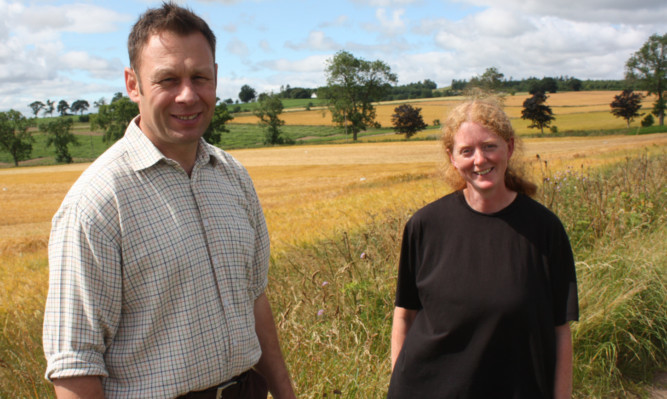A long-term experiment at the James Hutton Institute’s Balruddery farm near Dundee looks set to uncover some of the secrets of sustainable arable farming.
The Scottish Government funded trial is designed to last 18 years or three six-course rotations, and project leader Dr Cathy Hawes believes this will be a minimum requirement.
“We wanted to compare conventional arable farming with what we have called a sustainable cropping system. We could have cheated and used a grass and clover ley to boost fertility and improve soil structure, but we wanted to concentrate on a purely arable rotation.
“I am not aware of any other similar arable-based project in the UK.”
The “sustainable” system may not use grass or livestock but it does rely heavily on Discovery compost made by Dundee City Council from green waste. Around 35 tonnes per hectare of the material has been spread on the trial land every year since the project started in 2009.
“We drive it ourselves with tractors and trailers,” said JHI farms manager Euan Caldwell. “That is a major cost even though we are quite close to Dundee, and it’s one we monitor closely.”
Mr Caldwell has responsibility for laying out the trials and has used six fields, three on each side of a small burn in a shallow south-facing valley overlooking the River Tay.
All have predominantly the Balrownie series soils which are so common across eastern Scotland.
Each field is divided in two by a beetle bank and surrounded by a four-metre wide grass margin.
One half of each field is ploughed and managed conventionally in terms of pesticides and herbicides.
The other half is managed on the sustainable model and, apart from the application of compost, uses non-inversion tillage, straw incorporation rather than baling, and 70% less nitrogenous fertiliser.
Herbicides are used as required, but at reduced rates based on dose response curves.
There are other tweaks including undersowing clover in spring barley, and this year the sowing of oil radish as a cover crop after winter barley.
Beyond that each half field, conventional and sustainable, is sown with five varieties with varying characteristics and pest and disease resistance.
This might seem an impossibly complex management challenge, but Mr Caldwell claimed otherwise.
“We use 18-metre tramlines with one variety to each tramline.
“For combinable crops we link GPS technology with the yield meter on the combine. The trailer is fitted with accurate weigh cells and this gives us a double check.
Dr Hawes is then in charge of compiling a host of measurements relating to soils, greenhouse gas emissions and the effect on invertebrates and the seedbank.
Erosion is receiving particular scrutiny this year, with interceptor channels laid across the tramline wheelings allowing run-off to be measured.
Dr Hawes has a core team helping her, but reckons that up to 50 scientists are involved in monitoring specific aspects of the experiment.
The six crops in the rotation move clockwise around the fields, with winter barley followed by potatoes, winter wheat, spring beans, spring barley and winter oilseed rape.
Potatoes and their effect on soil structure are attracting particular attention to see if the accrued benefits of the previous crops are being negated.
Until now ploughing has been used for both systems ahead of potatoes, but Mr Caldwell hopes to experiment with a full-width stone separator capable of working directly into the previous stubble.
Irrigation on both systems is applied at 20mm in each tranche, but the sustainable field uses a boom system whereas the conventional field uses a traditional rain gun.
A tied ridger is also used in the sustainable field to form small dams across the bottom of the ridges to prevent run-off.
As a general observation Dr Hawes has noted that over the last three years yields have tended to be greater under conventional management for winter-sown crops but similar for spring crops.
However, she cautions that there is considerable year-to-year variation, and it will be a number of years before firm conclusions can be drawn.
